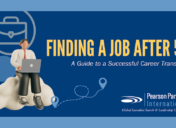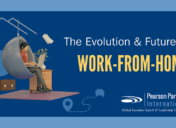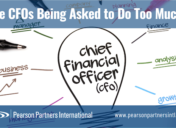Change Leadership in a Changing World

Kirsten Jordan, PeopleResults
Having developed change management strategies for many Fortune 500 clients, Kirsten Jordan, a partner at PeopleResults, understands the value of a practical and tactical approach to complex organizational change initiatives.
At the August 10 Pearson Partners HR Roundtable, a bimonthly series for senior corporate human resources executives in the North Texas area, Jordan discussed “Change Leadership in a Changing World.” She shared three important steps that change leaders can take to gain the support of all stakeholders. Here are some highlights from her presentation.
What is the role of a change leader in an organization?
The goal of a change leader is to align and prepare stakeholders for change, support them through the process, and evaluate the outcome. In some cases, you may be leading the change, but in others, you may be sponsoring or supporting someone else’s initiative.
What are the three most important steps for a change leader?
You need to use your “ESP”: explain, share and personalize. This approach is essential when trying to get everyone going in the same direction. You have to pay close attention to the people, as well as the change process itself.
Can you dive a little deeper into those three steps?
Absolutely. In order to be effective in creating or supporting change, you have to be able to explain things to your audience. That means you have to do your homework, so that you know what you’re talking about. That’s really important in establishing credibility.
What comes next?
Once you feel you understand the situation, you should start working on your “elevator speech” version for the change initiative. You need to be able to explain the reasons for the change, the nature of the change, and the desired outcome in simple terms. Otherwise, you will lose your audience.
What else is important at the “explain” stage?
First, you need to be very clear about what the goal is. You may not know how you will get there, but you want to be sure everyone knows what success looks like. Second, you need to be personally invested in the change and demonstrate that to your audience, because that makes a big difference in how people react to a change initiative.
Can you give an example of an elevator speech for a change initiative?
Sure. How about this one: “Our business intelligence initiative will drive better decision-making across the organization by providing a single version of the truth. We will consolidate multiple systems and simplify the reporting process to achieve that goal.”
What about the “sharing” element?
The sharing starts very early in the process. After you write down the key points for your elevator speech, start circulating your thoughts. Ask your colleagues to respond and provide their feedback. There’s a lot of truth to the saying: “If you want to go fast, go alone; if you want to go far, go together.”
Why is this important in building support?
Sharing helps you build a coalition of different people in the organization who are in favor of the change. Having a diverse network of supporters, rather than just carbon copies, can speed the implementation of the initiative.
How do you handle the critics of the plan?
There will always be critics of any plan, especially if the idea wasn’t theirs. Listen to them. Their feedback can be quite valuable in identifying the holes or problems with your change initiative. They can also provide guidance in how to tweak it to make things better, and to be more acceptable to other people. Even if they’re not willing to help, you can learn lessons from their criticism and articulation of what’s wrong. So, don’t be afraid to let your ideas grow and be embellished by others.
Isn’t there usually a deadline for launching and completing a change project?
Yes, but you shouldn’t short-change the “share” step, even though it takes time. It’s far better to talk to the opponents early in the change process, rather than waiting till the end. Many times, resistance to change occurs because people didn’t feel that their views were heard. Just the act of listening can help you reach your goal.
Please explain the “personalize” step in the process.
Personalizing the project is essential for several reasons. First, you need to be able to tailor the concepts in your elevator speech to different people. For example, some people prefer a direct approach in a conversation: “Here’s the issue, and here’s what we’re going to do.” But others respond better if you warm them up with a little personal conversation about their families, vacations or interests. As a change leader, you need to adapt your approach so they will be more receptive to your message.
What else is involved in personalizing?
People have different learning styles. Some of them will “get it” from charts and graphs, while others need an approach that appeals to their emotions. So, don’t pull out a list of facts for a “feeling person,” or vice versa. You’ll also find a difference between strategic thinkers who want to know the big picture, and tactical people who want to know exactly what they have to do in the plan.
Are there other benefits?
Personalizing the change gets people motivated and engaged in the process. It’s the key to getting them to buy in to making the change.
Any other thoughts?
Don’t be afraid to repeat your elevator speech during the change process. People forget the reasons for the project or the desired outcome, and need to be reminded from time to time. Also, don’t be reluctant to adjust your performance management criteria to reflect the change initiative. Tying compensation to the desired outcome can be a very strong motivator.
Kirsten Jordan is a change management leader with more than 25 years of experience. She began her career at Accenture and now is a partner at PeopleResults. She enjoys leading complex change programs for business transformations, re-engineering initiatives, systems implementations and organization changes.
CALL FOR SPEAKERS
We are seeking speakers for our Pearson Partners HR Roundtable events. If you, or someone you know, has expertise in presenting on an executive-level HR-related topic, please contact us![]() Successfully Encoded.
Successfully Encoded.
Are you a member of the Pearson Partners HR Roundtable? If you are a senior corporate human resources executive who is interested in joining our discussions, please check out our LinkedIn group.
Related Posts
- ← TweetChat: Executive Interviewing Tips – September 20, 2016
- A New HR Leader for Rosewood Corporation →














